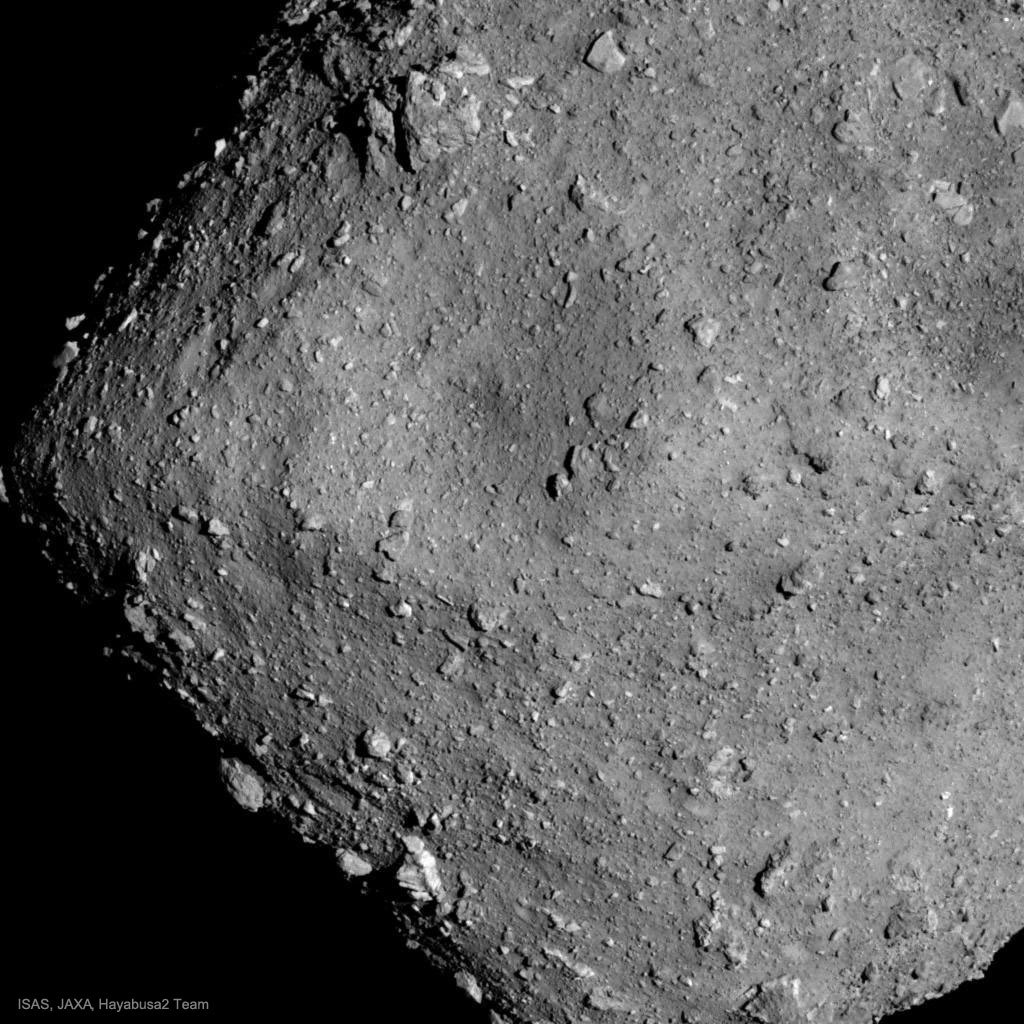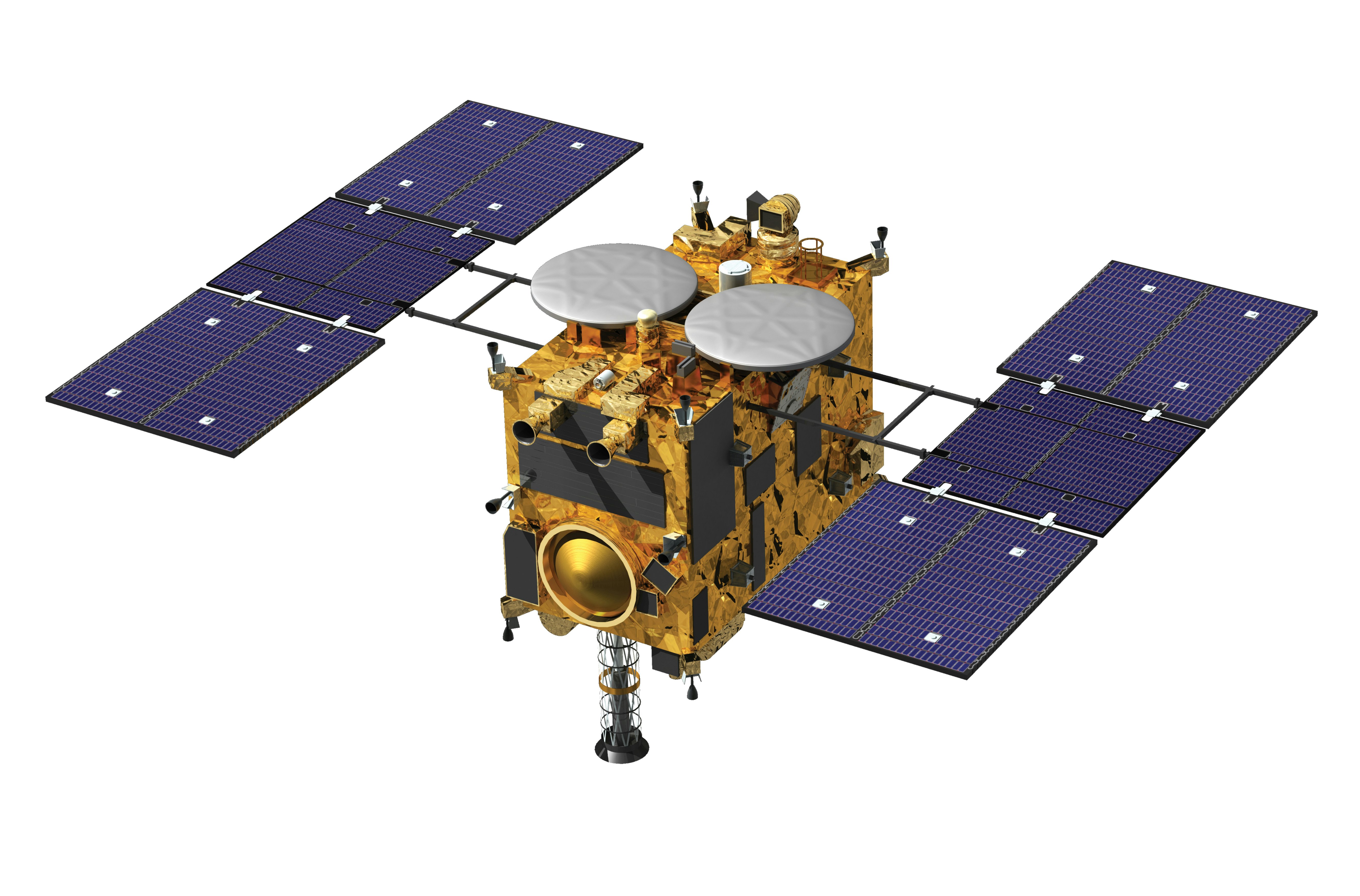
Asteroids are many things — dinosaur killers, archives of the earliest days of the solar system, targets for planetary defense — but they’re not supposed to be water worlds. Right?
Well, at least not these days. But in the earliest days of the Solar System’s formation, Ryugu—the diamond-shaped target of the Japan Aerospace Exploration Agency (JAXA)’s Hayabusa2 mission — had a tiny ocean within it.
Before it was the asteroid it is today, high-precision isotope analysis shows it was part of a larger, older parent before being blasted apart in a collision. But even more surprising is that within that tiny ocean, some dry silicates from the original parent asteroid managed to survive unaltered. A new paper from one of Hayabusa’s Curation Teams published this month in Nature Astronomy gets at what they show about the makeup of Ryugu’s parent and the asteroids of the very early Solar System.
WHAT’S NEW — In December 2020, Hayabusa2 returned a little over five grams of Ryugu after a six-year mission. Because the samples are a relatively limited number of tiny grains, each one was tagged with its own name and number. In this case, the team’s analysis was based on just one of these particles, C0009.
Speaking with Inverse, isotope cosmochemist Ming-Chang Liu of UCLA explains that C0009 was particularly interesting because it “distinguished itself by having a small amount of anhydrous silicates”—that is, it contains oxygen-enriched minerals unaffected by water in the middle of a sample strongly altered by H2O.
The makeup of Ryugu was significantly altered by liquid water in its interior. Despite forming deep in the cold outer Solar System, water and carbon dioxide ice accreted together into the protolith that made up Ryugu’s parent along with short-lived radioactive isotopes. As those radioactive rocks warmed the ice around them, Liu notes, “they would start floating within the parent body” — and over time transform the silicates and pyroxine that made up Ryugu’s predecessor into water-bearing phyllosilicates.

The remaining anhydrous silicates, then, give the team a clue about what other materials in the early Solar System might have looked like before they crashed into Ryugu’s tiny ocean. And the materials look like the earliest materials formed in the Sun’s photosphere. The isotopes of oxygen in the sample the team worked with show that the asteroid contains amoeboid olivine and magnesium-rich chrondrules that were incorporated directly from the solar nebula.
Motoo Ito, a cosmochemist with the Japan Agency for Marine-Earth Science Technology and member of the broader Phase 2 team, was the lead author — along with Liu and others — of a study of Ryugu’s pristine particles, which demonstrate the ways CI meteorites on Earth have been altered by our own much more volatile environment.
Speaking with Inverse, Ito notes that even if knowing the chemical composition “doesn’t tell us where the parent body was formed,” it still “allows us to build some kind of Ryugu history, how it formed in the outer solar system.”
WHY IT MATTERS — This work comes out of the efforts of the larger Phase 2 Curation Team. After Hayabusa2 swung past Earth to drop off its cargo, the five grams of samples it brought back were divided between eight teams: six doing specific initial analysis — of the chemical makeup, the stony and sandy materials, volatiles, solid and soluble organic materials — on the materials, and two more large, international teams that work to clarify the samples’ potential scientific impact.
In June, Liu and Ito’s larger team, based out of western Japan’s Okayama University, published their interpretation of the samples. They found Ryugu’s phyllosilicates are like those found in CI chondrites, a rare and very primitive kind of meteorite that has mostly been collected in Antarctica.
But because they “could have been sitting there for decades, years, ages before we pick them up,” notes Liu, “Earth has a very reactive atmosphere, so the CI chondrite materials will interact with the atmosphere.” By comparison, the samples from Hayabusa2 “are probably the most pristine chondrite materials one can ever get.”
The survival of these elements of Ryugu’s protolith are maybe even more surprising in light of work from some of the other teams. The Stony Analysis Team published their initial results this month in Science, which included liquid water from Ryugu trapped inside a crystal. Because Ryugu picked up frozen carbon dioxide as well as water ice when it was forming, the liquid water found in the sample was carbonated.

WHAT’S NEXT — Some of the context for Ryugu is already on its way to Earth. Last May, NASA’s OSIRIS-REx spacecraft left the asteroid Bennu after scooping up maybe half a pound of rocks to begin its voyage home to Earth. This was after OSIRIS-REx unexpectedly punched a 20-foot-wide crater in Bennu’s side — a result of it being held together much less firmly than anyone expected.
Like Ryugu, Bennu is a relatively pristine carbonaceous asteroid, although it’s a different type: B-type asteroids like Bennu looks a little bluer than Ryugu and its fellow C-types, which look reddish. But regardless of their color, according to cosmochemist Ito, finding similarly complex carbonaceous components in the sample will “tell us about the distribution of organic components in the solar system.”
Even as it answers questions about Ryugu’s makeup, this work also raises questions about how Ryugu fits into the schema of the most primitive asteroids and meteorites. According to Liu, the team thinks that despite the different categories that have arisen to cover all the different chondrites found on Earth over the years, “those starting materials might have been very similar.” “We just want to be provocative a little, stir the pot a little, try to shift the paradigm,” he added.







